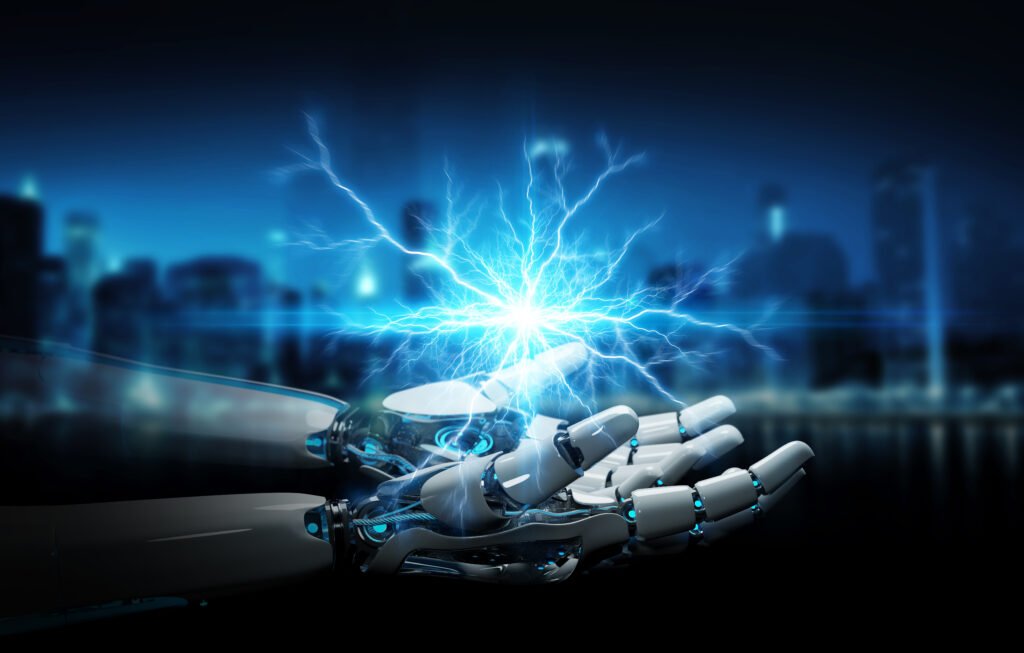Snippets
- Utilities are harnessing AI and data analytics to revolutionize electricity distribution and meet surging global demands.
- Discover how AI improves grid efficiency, reduces outages, and integrates renewable energy for a sustainable future.
- Learn about the challenges utilities face in adopting AI and how data-driven solutions are reshaping the energy sector.
Table of Contents
ToggleIntroduction
Ever wondered how your lights stay on even during a storm, or how renewable energy sources power your favorite gadgets? Behind the scenes, a quiet revolution is underway in the energy sector. Utilities are turning to AI and big data to tackle one of humanity’s biggest challenges: meeting the ever-growing demand for electricity.
Electric vehicles, smart homes, and digital lifestyles have pushed the limits of traditional grids, creating unprecedented pressure. Add in the push for renewable energy and reducing carbon footprints, and the stakes have never been higher. Fortunately, artificial intelligence (AI) is stepping in to revolutionize how utilities plan, operate, and innovate. Let’s dive into this fascinating intersection of energy and technology!
The Growing Demand for Electricity and Its Challenges
The 21st century has ushered in an insatiable appetite for electricity. Whether it’s charging our devices, powering electric vehicles, or running data centers, energy demand is soaring. Global electricity consumption has been increasing year after year, driven by new technologies, urbanization, and the electrification of transportation.
But meeting this demand isn’t as simple as flipping a switch. Many utility companies are grappling with aging infrastructure that wasn’t designed for modern needs. On top of that, integrating renewable energy sources like solar and wind—which are unpredictable by nature—complicates the supply-demand balance. These challenges underscore the urgent need for smarter, more adaptable energy solutions.

How AI Is Transforming Utilities
AI is proving to be a game-changer for utilities, offering smarter ways to manage energy grids, optimize operations, and predict future demands. Let’s explore how:
Predictive Analytics for Demand Forecasting: AI can analyze massive amounts of historical and real-time data to predict electricity demand with precision. By understanding patterns in energy consumption, utilities can plan better and avoid blackouts or energy wastage.
Real-Time Monitoring: Smart grids equipped with AI can detect issues like equipment failures or overloads in real time. This enables utilities to respond swiftly and prevent widespread outages.
Renewable Energy Integration: AI models can predict the output of renewable energy sources like solar panels and wind turbines, ensuring their seamless integration into the grid. For instance, if a cloudy day is forecasted, AI can suggest compensating with stored energy or alternate sources.
By automating and optimizing these processes, AI reduces human error and improves efficiency across the board.

Stay Informed. Stay Ahead
Join a community that goes beyond the headlines. Our newsletter delivers:
🔹 Curated Industry Insights
🔹 Expert Analysis
🔹 Actionable Impact
No fluff. No generic updates. Just meaningful insights that help you lead in a fast-evolving industry.
Big Data: The Unsung Hero
While AI grabs headlines, big data quietly lays the groundwork for its success. Utilities are collecting vast amounts of data from smart meters, weather sensors, and consumer devices. Here’s how big data drives energy innovation:
Consumer Insights: By analyzing usage patterns, utilities can design energy-saving programs tailored to specific customer needs. For example, they can offer discounts for off-peak usage to reduce grid stress during peak hours.
Grid Stability: Big data helps utilities predict and address issues before they escalate. For instance, it can highlight areas where the grid is underperforming and recommend upgrades.
Energy Storage Optimization: Storing excess energy efficiently is critical, especially for renewables. Big data analytics ensures that stored energy is distributed wisely, minimizing waste and maximizing availability.
Simply put, big data is the backbone that supports smarter energy management and ensures that utilities stay ahead of the curve.
Case Studies: AI in Action
AI’s transformative potential is already evident in real-world applications:
- Preventing Outages: A U.S. utility company implemented AI-powered predictive maintenance to identify aging equipment and prevent failures. As a result, they reduced outages by 30%.
- Autonomous Energy Grids: In Germany, an autonomous grid pilot program used AI to manage energy flow from solar and wind sources, optimizing supply for local communities.
- Renewable Energy Integration: In India, AI is helping integrate solar power into rural grids, enabling reliable electricity for remote areas.
These success stories highlight AI’s ability to tackle complex energy challenges and create tangible benefits for consumers and the environment.
Challenges in Implementing AI
Despite its promise, AI adoption in utilities isn’t without hurdles:
- Cost: Deploying AI technology requires significant investment in software, hardware, and training. Many utilities, especially in developing regions, struggle to allocate such funds.
- Data Privacy and Security: Collecting and analyzing consumer data raises concerns about privacy. Robust policies and safeguards are essential to build public trust.
- Resistance to Change: Traditional utility companies often face internal resistance to adopting new technologies, slowing down innovation.
Overcoming these challenges requires collaboration between governments, utilities, and tech companies to create sustainable solutions.
Conclusion
AI and big data are revolutionizing the way utilities meet the growing demand for electricity. From smarter grids to renewable integration, these technologies are paving the way for a cleaner, more efficient energy future. But the road isn’t without challenges, and success will require collaboration, investment, and innovation.
What do you think about AI’s role in reshaping the energy industry? Join the conversation below and share your thoughts or ideas—we’d love to hear them!





Solid analysis! Betting trends are shifting, and quick access to platforms like 21jl login com for real-time data is crucial. Account verification steps are key for secure play, too – good point! 👍
Ang bonanzabet88 promo ay nagawa kong i-claim gamit ang aking mobile number. Ang site ay may special offers para sa mga mahilig sa slots at sports betting. Ang withdrawal process ay naka-verify sa loob ng 24 hours. Ang mobile app ay compatible sa iOS at Android. bonanzabet88
That’s a fascinating take on recent race results! Seeing platforms like jl boss app casino innovate with live dealer games really changes the viewing experience – adds another layer of excitement, doesn’t it? Great analysis!